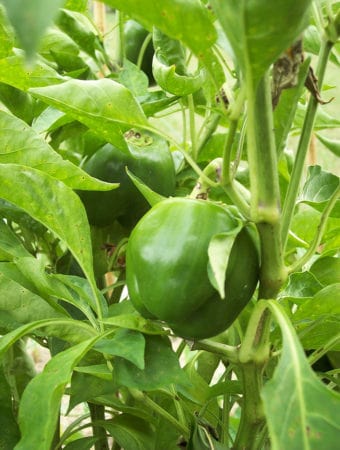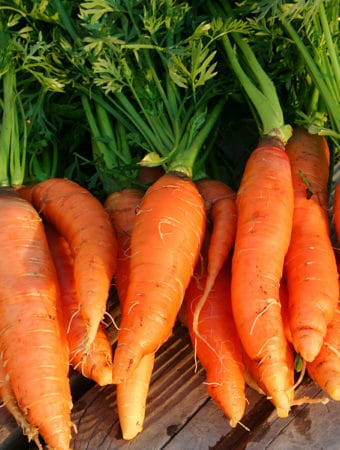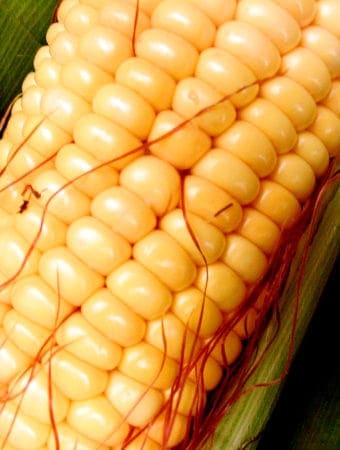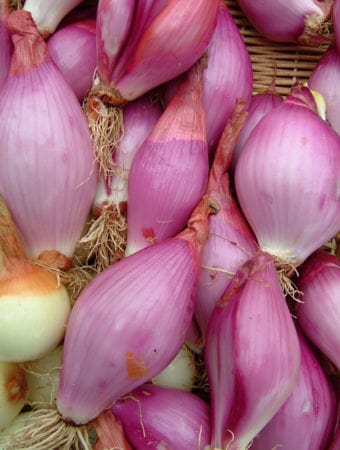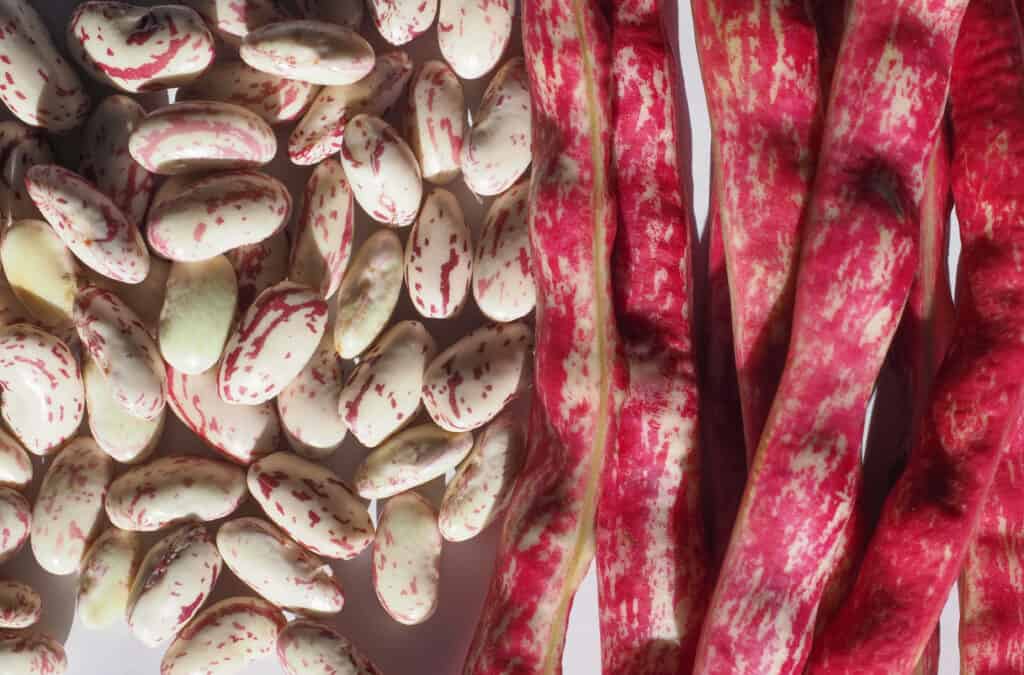
Just tender cooked borlotti beans–often called cranberry beans–are a tasty late summer snack.
Quick Recipe: Use your thumb to pop open the fresh-picked speckled pods, place a few handfuls of beans in a skillet and cover with just an inch of water; add a couple of cloves of garlic, peppercorns, and fresh sage, and simmer until they are just tender about 10 to 15 minutes. Drain away the water; let the beans dry a minute or two in a colander or on paper towels; lightly salt to taste and drizzle with extra virgin olive oil. You can serve them alone warm or cooled or add them to the antipasto tray with mixed cheeses and sausages.
Snack Suggestion: If the beans are fresh-picked just barely visible in the pod and still young, you can leave out the cooking part, and snack on the creamy textured, nutty-flavored borlottis simply adding olive oil and sea salt. If you’ve brought home dried beans, soak those 3 to 8 hours at room temperature or place them in a saucepan covered with water and bring to a boil, remove from the heat, and soak for 1½ hours before cooking.
How to Choose: Select fresh borlotti beans in full, brightly colored pods.
How to Shell: Split open the curved inside seam of the pod with your thumb and remove the beans.
How to Store: Fresh borlotti beans can be kept in the refrigerator up to a week. To freeze borlotti beans, blanch briefly in boiling water, drain, and freeze in a zip-top plastic bag.
Substitute. Tongues of fire, cannellini, and pinto beans can stand in for borlotti beans.
About Borlotti Beans
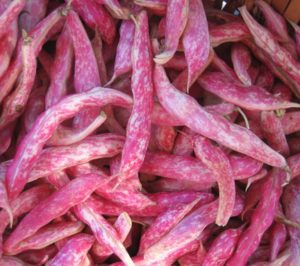
The borlotti bean is an oval to round, ivory and dark red to brown speckled and blotched bean. It comes in a pod very similar, streaked ivory and dark red. The beans and pods are just about the same size as a large string bean. Inside, the borlotti is cream-colored. Its flavor compares to the chestnut. Borlottis are shell beans; you don’t eat the pods.
Cooked borlottis are tender and moist. They are native to South America but came to Tuscany and northern Italy long ago and have long been a favorite in Italy and Spain. In Italian cookery, the borlotti is used often in bean and pasta soup, know as pasta e fagioli. The borlotti can be added to stews or combined with other vegetables as a side dish.
Enjoy the borlotti fresh in summer and dried year-round. Its timing is perfect; the borlotti is ready for picking in summer just as the string bean harvest slows.
In the United States, you are most likely to find the borlotti called cranberry bean. It is also called crab eye bean, Fagiolo Romano, Roman Rosecoco Saluggia, and Salugia bean. The borlotti is related to the tongues of fire bean which is similar in appearance, perhaps more vibrant yet.




